Anna Mikaelyan
Keypoint Description by Symmetry Assessment -- Applications in Biometrics
Nov 03, 2023

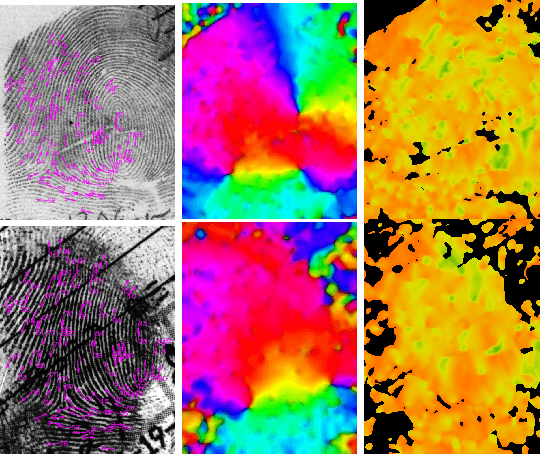

Abstract:We present a model-based feature extractor to describe neighborhoods around keypoints by finite expansion, estimating the spatially varying orientation by harmonic functions. The iso-curves of such functions are highly symmetric w.r.t. the origin (a keypoint) and the estimated parameters have well defined geometric interpretations. The origin is also a unique singularity of all harmonic functions, helping to determine the location of a keypoint precisely, whereas the functions describe the object shape of the neighborhood. This is novel and complementary to traditional texture features which describe texture-shape properties i.e. they are purposively invariant to translation (within a texture). We report on experiments of verification and identification of keypoints in forensic fingerprints by using publicly available data (NIST SD27) and discuss the results in comparison to other studies. These support our conclusions that the novel features can equip single cores or single minutia with a significant verification power at 19% EER, and an identification power of 24-78% for ranks of 1-20. Additionally, we report verification results of periocular biometrics using near-infrared images, reaching an EER performance of 13%, which is comparable to the state of the art. More importantly, fusion of two systems, our and texture features (Gabor), result in a measurable performance improvement. We report reduction of the EER to 9%, supporting the view that the novel features capture relevant visual information, which traditional texture features do not.
Compact multi-scale periocular recognition using SAFE features
Oct 18, 2022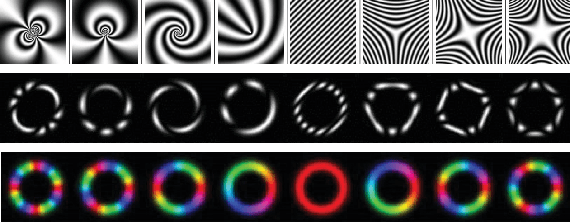
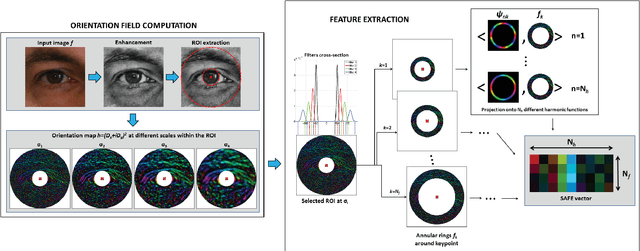
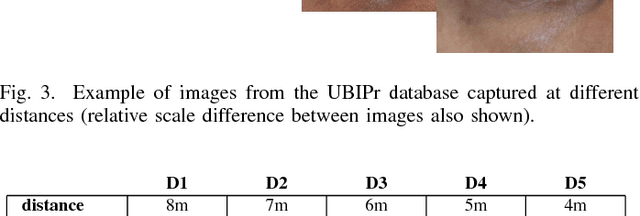
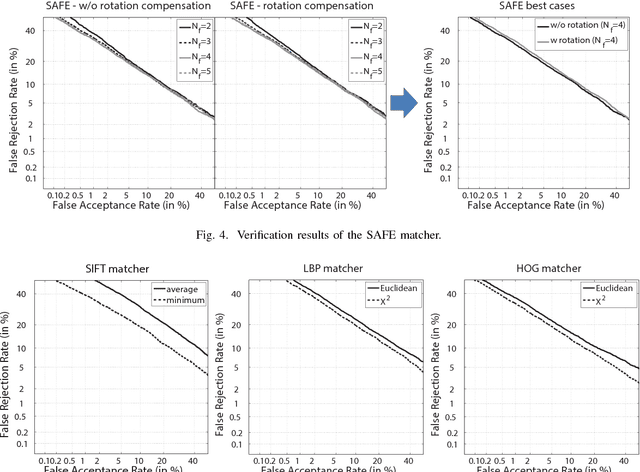
Abstract:In this paper, we present a new approach for periocular recognition based on the Symmetry Assessment by Feature Expansion (SAFE) descriptor, which encodes the presence of various symmetric curve families around image key points. We use the sclera center as single key point for feature extraction, highlighting the object-like identity properties that concentrates to this unique point of the eye. As it is demonstrated, such discriminative properties can be encoded with a reduced set of symmetric curves. Experiments are done with a database of periocular images captured with a digital camera. We test our system against reference periocular features, achieving top performance with a considerably smaller feature vector (given by the use of a single key point). All the systems tested also show a nearly steady correlation between acquisition distance and performance, and they are also able to cope well when enrolment and test images are not captured at the same distance. Fusion experiments among the available systems are also provided.
 Add to Chrome
Add to Chrome Add to Firefox
Add to Firefox Add to Edge
Add to Edge